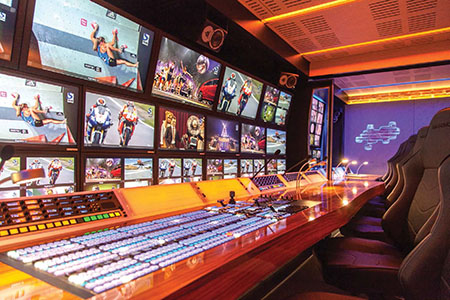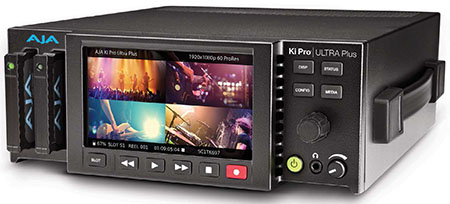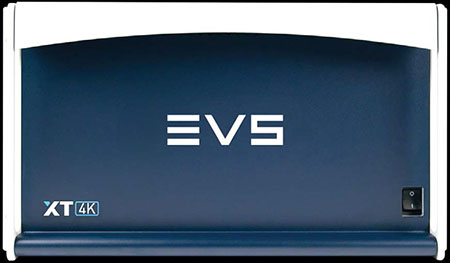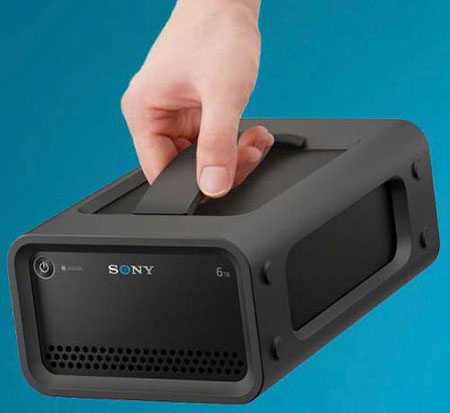Storage Functionality Runs the Gantlet
SAN FRANCISCO—When it comes to storage for today’s media production, what works here does not necessarily work over there.

Los Angeles-based Vista Studios’ new installation includes SAM sQ1000 series of servers.
Take the requirements of Vista Studios, a new multi-service production facility in Los Angeles that’s working with Hollywood motion picture studios and broadcast networks to produce original programming.
For Vista, the storage solution they needed was a scalable, file-based system that could accommodate workflows in SD, HD and UHD, and distribute content across an array of delivery platforms efficiently.
Then again, the requirements are different for a post-production facility, where the goal is to offload video as efficiently as possible. Here, high performance and high-bandwidth storage are the priorities, particularly when there’s a great deal of collaboration across different user work stations, according to Brad Johns, founder of Brad Johns Consulting, a storage consulting firm.
THE END GOAL
Users must consider what storage infrastructure is ideal after post production is finished. Is the storage device you installed for fast acquisition the best medium when the goal is now to access and monetize content through redistribtution?
“There’s so much going on in the storage space,” Johns said, as content creators in the media and entertainment space consider which features are of key importance based on their production priorities.
Get the TV Tech Newsletter
The professional video industry's #1 source for news, trends and product and tech information. Sign up below.
Is it cost? Scalability? Portability for remote productions? Or another hybrid functionality altogether?
For Vista Studios, its newly built 30,000-square-foot studio has four production stages, four production control rooms, and a suite of technology that includes routing, camera records, editing and playout origination. The studio is tackling live and near live production for broadcasters, OTT content creators and media distribution companies with multi-camera shoots in 4K and HD.
The storage technology it put in place from Snell Advanced Media includes the SAM sQ1000 series of servers, which offers internal storage capability of around 200 HD hours; support for SD-SDI, HD-SDI and 3G; up to 12 3G or four 12G video ports; and support for multiple compression standards in a 3RU-sized unit.
For an organization like Vista, the priority is a server technology that can deliver sustained operation in fast-turnaround situations.
Due to the pace of production, and the number of unique projects it was tackling, the production house looked at server technology that could create automated workflows for individual clients depending on their needs. “It is absolutely critical that we’re able to adapt workflows to suit our clients’ needs at a moment’s notice,” said Randall Heer, CEO of Vista Studios.
A PLUS FOR PORTABILITY
The requirements are different for post, where factors like high-performance and high-bandwidth capability play a larger role, and a recent product launch from Grass Valley, Calif.-based AJA Video certainly fits the bill.

AJA Ki Pro Ultra Plus
Unveiled at the 2017 NAB Show, AJA’s Ki Pro Ultra Plus offers 4K/UltraHD and HD video to standard production codec capability, including Apple ProRes and Avid DNxHD MXF. Housed in a portable 2RU half-rack, it also offers I/O flexibility and a range of connectivity options from 3G-SDI to HDMI 2.0 and fiber.
Users can record four channels of HD simultaneously as ProRes files, each with different compression profiles, to AJA Pak 1000, 512 or 256 SSD media. For confidence monitoring, channels can be displayed on the device’s LCD screen as a quad-split during capture, which can also be output over HDMI, SDI, fiber, and the device’s web-based UI.
The Ki Pro Ultra Plus also features HDMI 2.0 support for full 4:2:2 and 4:4:4 capture/output at up to 4K/UltraHD 60fps, and intuitive web-based UI for remote monitoring, control and deployment in the field or in-studio.

EVS’s XT4K
For mobile truck productions, the goals are slightly different. Gearhouse Broadcast, for one, has installed a XT4K from EVS in the company’s IP-ready 4K truck. Likewise, F&F Productions’ 4K HDR truck, the GTX- 18, also installed several EVS XT4Ks.
In both cases, the trucks are relying on a server system with IP-based networking functionality.
In the case of F&F, the replay area of the truck features four XT4K server systems for the production of super-slow motion replays and highlights. The truck was launched when it undertook production of the recent UFC 214 fight in Anaheim, Calif., as well as for the 2017 PGA Championship golf in Charlotte, N.C.
Gearhouse Broadcast, meanwhile, outfitted its Columbus production truck with XT4K, an IP-enabled UHD-4K flexible live production server, which is being used for multiple entertainment and sports productions across the West Coast.
The two production vehicles selected the XT4K, which features single-cable 12G SDI, built-in IP connectivity and an update that will enable native support of SMPTE 2110 IP standards. The server offers users a flexible live storage and replay solution for any production infrastructure. It gives users up to four channels of flexible in/out combinations and gives users complete UHD/4K media control from ingest to playout.

Sony’s PSZRA6T/BQ
Storage solutions are also getting miniaturized for productions that require rugged, portable solutions. One of the newest is the Sony PSZRA6T/BQ, a 6 TB dual 3.5-inch HDD designed for field backup. Housed in an external silicone cover, the storage solution has a built-in damper around internal HDDs for additional shock-resistance. The high-speed device offers up to 440 MBps recording in RAID 0 mode. It has transfer speeds and high performance required for 4K production and can deliver high-capacity content workflow options from the field to the studio.
Portability was the impetus behind Blackmagic Designs’ HyperDeck Studio Mini, a miniaturized professional deck that records and plays back broadcast quality 10-bit video using commonly available SD and UHS-II cards.
This miniaturized broadcast deck offers recording to dual SD card recorders in all SD, HD and Ultra HD formats. The HyperDeck Studio Mini’s small size means customers can use it for ISO recording at multi camera events, as playback decks for large multiscreen digital signs, in post production with an editing system, and inclient suites for review and approval. The HyperDeck Studio Mini puts the features of a professional grade deck into a compact size that’s 5.5 inches wide and 1.5 inches tall.
Likewise, small production teams are finding success with the Avid NEXIS | PRO storage solution, which allows users to find and share media and adapt workspace capacity and protection as requirements change.
That was the case for the Sundance Institute, a facility that supports the work of independent production teams. The NEXIS | PRO technology is part of a networked storage set up that allows everyone on the team to get instant access to the same footage as soon as it is ingested. There’s no need to run drives back and forth to different workstations; instead, the NEXIS | PRO serves as an open, intelligent, and flexible storage option.
Susan Ashworth is the former editor of TV Technology. In addition to her work covering the broadcast television industry, she has served as editor of two housing finance magazines and written about topics as varied as education, radio, chess, music and sports. Outside of her life as a writer, she recently served as president of a local nonprofit organization supporting girls in baseball.

